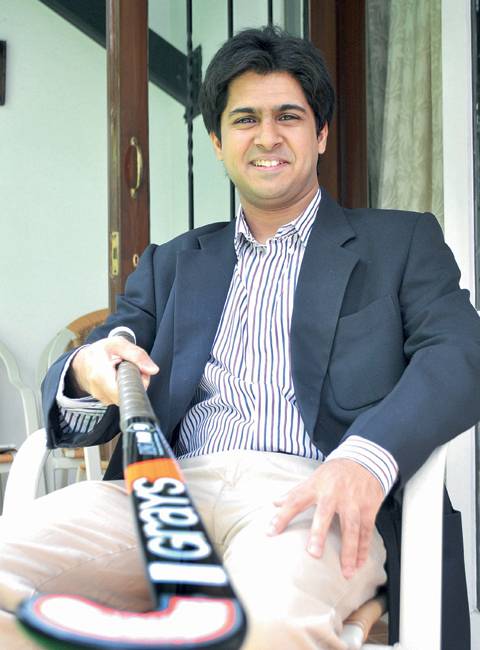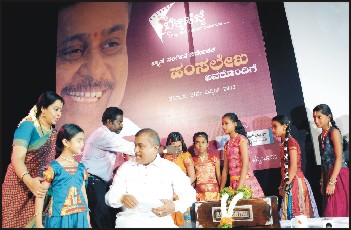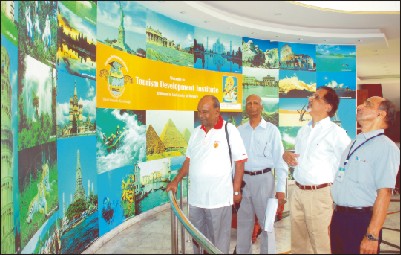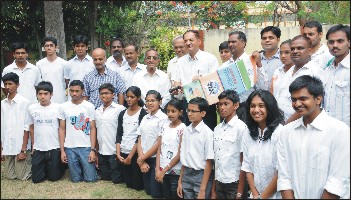Six years ago, Deepak and Deepika Dorai moved to Bangalore from Chennai, where they had started a unique artistic movement called Bimba. They used to run their art hut out of an old home that was razed to the ground — you can almost hear the pain in his voice when Deepak talks about this. Yet, today, the Dorais have successfully recreated their dream project in Bangalore – a distinctive public space for art and performance that is teeming with activity and enterprise.
One of the most cheering aspects of Bimba the Art Ashram is perhaps the space where it’s run: a 100-year-old building on DVG Road in Basavanagudi that was falling into disrepair before the Dorais lovingly restored it. Belonging to an old Bangalore family that has given the Dorais the run of the place, the house, with its many traditional features, could act as a template for how old structures in the city, facing the threat of demolition, can be revived. “It is a house in which 42 children were born; you can say this is very fertile ground,” says Deepak.
To convert the house from a private residence to a public space, Deepika, whose creative energies have directed all the changes, first began by tearing down the boundary walls to create a more open feel. The original pillared entrance has been retained, and as you enter through it you can feel the temperature drop a few degrees, thanks to old-world construction features such as stone and red-oxide floors, high ceilings and hollow-brick walls.
Deepika uses the rooms within the main house to run her artifacts and furniture gallery, and this is also where she retails her clothing line. Deepika creates some unique hand-crafted furniture, ‘upscaling’ old and discarded tables, chairs and beds into one-of-a-kind items. “This is something people working in newspapers before the computer age would remember,” says Deepak pointing to a large metal tray sectioned into small squares – a linotype used in hot-metal typesetting. These ‘trays’ have been used by Deepika to make cupboards (they act as the doors) and a coffee table (mounted by glass).
Bimba also hosts live performances every Saturday, and these include shows such as one by a practitioner of the Karnataka rod puppetry tradition, a talk by a musicologist on the Jogis’ folk music or a classical vocal Carnatic performance. Along with these, what draws most people to Bimba on Saturdays is the Rasalok theatre – this is also what the ‘art hut’ has become most famous for in recent years. The Dorais call this ‘still theatre of miniature art’; at its essence these are vibrant storytelling performances using miniature figures and three-dimensional sets, again hand-crafted by Deepika. Most stories are mythological in nature, and two narrations take place in adjoining rooms done by Deepika and her mother Uma Nagraj. These performances form an essential part of Bimba’s activity calendar especially during Navratri, when day-long sessions are held.
EARTH-SENSITIVE ART
While promoting the ideas of earth-sensitive art, we also like to draw people into our performances and our miniature theatre, through which we tell stories that have their roots in mythology. This story-telling tradition has been in my family for generations; my grandmother MN Susheelamma evolved and finetuned the making of a 3-dimensional still scene on a mini-stage as part of her Navaratri festival offering. The key to the visual magic lay in her sense of aesthetics, period and proportions in the miniature space. This practice was continued and improvised upon by my mother Uma Nagraj, who now composes and narrates a magical moment every year. I’m trying to carry on this great artistic tradition.
Deepika Dorai, Founder, Bimba the Art Ashram
source: http://www.timesofindia.indiatimes.com / Home> City> Bangalore / by Shrabonti Bagchi , TNN / April 29th, 2012





